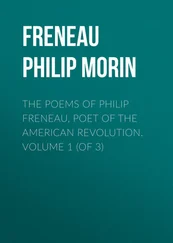Philip W. Blood - Birds of Prey
Здесь есть возможность читать онлайн «Philip W. Blood - Birds of Prey» — ознакомительный отрывок электронной книги совершенно бесплатно, а после прочтения отрывка купить полную версию. В некоторых случаях можно слушать аудио, скачать через торрент в формате fb2 и присутствует краткое содержание. Жанр: unrecognised, на английском языке. Описание произведения, (предисловие) а так же отзывы посетителей доступны на портале библиотеки ЛибКат.
- Название:Birds of Prey
- Автор:
- Жанр:
- Год:неизвестен
- ISBN:нет данных
- Рейтинг книги:4 / 5. Голосов: 1
-
Избранное:Добавить в избранное
- Отзывы:
-
Ваша оценка:
Birds of Prey: краткое содержание, описание и аннотация
Предлагаем к чтению аннотацию, описание, краткое содержание или предисловие (зависит от того, что написал сам автор книги «Birds of Prey»). Если вы не нашли необходимую информацию о книге — напишите в комментариях, мы постараемся отыскать её.
Professor Richard E. Holmes (18 February 2001).
Birds of Prey is a microhistory of the Nazi occupation of Białowieźa Forest, Poland’s national park. The narrative stretches from Göring’s palatial lifestyle to the common soldier on the ground killing Jews, partisans, and civilians. Based entirely on previously unpublished sources, the book is the synthesis of six areas of research: Hitler’s Luftwaffe, the hunt and environmental history, military geography, Colonialism and Nazi Lebensraum, the Holocaust, and the war in the East. By weaving together a narrative about Hermann Göring, his inner circle, and ordinary soldiers, the book reveals the Nazi ambition to draw together East Prussia, the Bialystok region, and Ukraine into a common eastern frontier of the Greater German state, revealing how the Luftwaffe, the German hunt, and the state forestry were institutional perpetrators of Lebensraum and genocide. Up until now the Luftwaffe had not been identified in specific acts of genocide or placed at large scale killings of Jews, civilians, and partisans. This gap in the historical record had been facilitated by the destruction of the Luftwaffe’s records in 1945. Through a forensic and painstaking process of piecing together scraps of evidence over two decades, and utilizing Geographical Information System software, Philip W. Blood managed to decipher previously obscure reports and expose patterns of Nazi atrocities.












